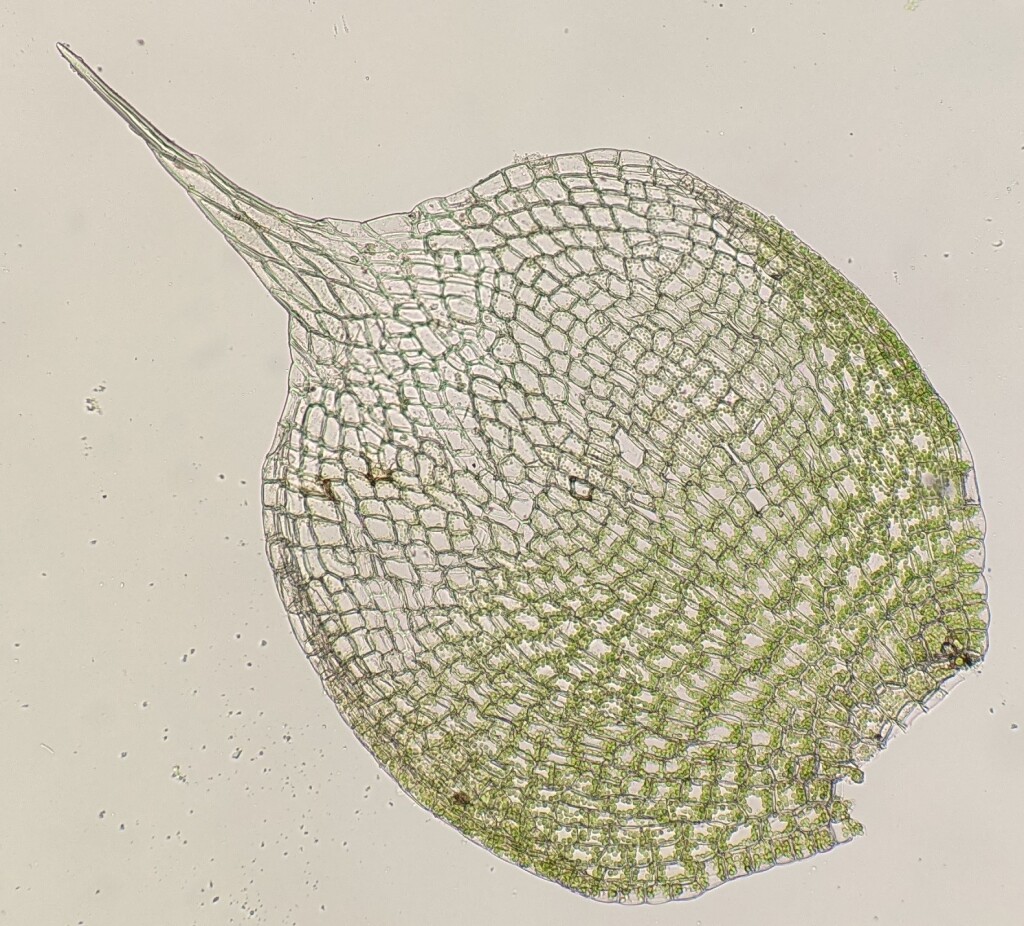Gigaspermaceae
Autoicous, paroicous (not in Victoria) or dioicous with male plants smaller than female plants (not in Victoria). Asexual reproduction occasionally by lenticular gemmae at the apex of erect stems (not in Victoria). Plants scattered or forming loose turves on soil. Primary stems fleshy, subterranean, without leaves, giving rise to erect simple or sparingly branched aerial male or female stems, with numerous or scattered hyaline or brownish-hyaline rhizoids; central strand weak (not in Victoria) or absent. Leaves arranged around stem and facing all directions, becoming larger toward branch or stem apex, erect- to wide-spreading when moist, erect-spreading to appressed when dry, sometimes slightly contorted; apex rounded and abruptly apiculate or long-acuminate, sometimes with a hairpoint; costa absent or subpercurrent (not in Victoria) to excurrent (not in Victoria); margins entire or faintly denticulate toward apex, plane, without a border; laminal cells quadrate to hexagonal, becoming larger and rectangular toward base, smooth; alar cells not differentiated. Perichaetial leaves larger than vegetative leaves. Acrocarpous. Capsule erect, symmetric, immersed or exserted (not in Victoria), operculate or cleistocarpic (not in Victoria). Calyptra small, mitrate or cucullate (not in Victoria), glabrous. Operculum when present plano-convex with a minute apiculus. Peristome absent. Spores large, usually greater than 50 µm diameter.
Five genera and six species shared between the continents of the southern hemisphere (except Antarctica) and some larger islands (e.g. Madagascar and New Zealand), and extending north into Europe and North America; one genus and species in Victoria.
The Gigaspermaceae are defined by a combination of subterranean rhizomes giving rise to aerial leafy stems, an absence of a peristome and large spores, usually greater than 50 µm diameter. The five genera here included within the Gigaspermaceae form a lineage that is closely related to a lineage comprising Funariaceae, Encalyptaceae and Disceliaceae (Larraín et al. 2009; Liu et al. 2012).
 Spinning
SpinningLarraín, J.; Herrera, F.; Budke, J.M.; Goffinet, B. (2009). Phylogenetic affinities and conservation status of the Chilean endemic Costesia spongiosa (Gigaspermaceae). The Bryologist 112: 278–286.
Liu, Y.; Budke, J.M.; Goffinet, B. (2012). Phylogenetic inference rejects sporophyte based classification of the Funariaceae (Bryophyta): rapid radiation suggests rampant homoplasy in sporophyte evolution. Molecular Phylogenetics and Evolution 62: 130–145.



